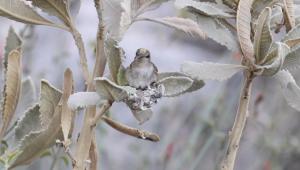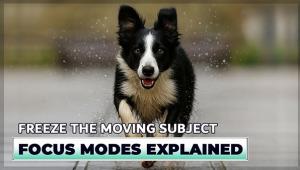Ways Of Looking
Lighting Observations, Lighting Terms
Imagine yourself walking into a room where there are numerous objects covered with small mirrors. The mirrors follow the form and shape of the objects. The walls of the room have a slot that goes continuously around the entire room. Behind the slot is a light that shines into the room and that travels the entire distance, from wall to wall. As the light travels it passes through numerous color filters built into the slot. The light reflects off the mirror facets on the objects. You can also move throughout the room and observe the objects and the light by standing with the light coming in over your shoulder, from the side or even standing behind the objects as the light hits them.
That’s pretty much what is going on when you go into the world with your camera.
Light is always changing and different—no two sunsets have ever been alike. But there are certain common terms used to describe light that come in handy when photographing, as they can guide you in making choices about exposure patterns and modes and how to read and interpret the light. Looking at light as a “type” can help you use your camera to best read the light for an excellent exposure; it can also yield ideas on how to bring the optimum potential out of every subject and scene.
The aim here is not to categorize the miraculous, but to suggest seeing exercises that are designed to open your eyes to the picture possibilities that a different type of light affords. It is also to recognize that although you might see the light play in one way the sensor may record it as something quite different. Reconciling vision and how images are made creates an understanding of how to bridge what might otherwise be a wide gap.
Given that every moment is unique and light is always particular to the time of day, weather and environment, here are some terms used commonly in photography.
Light: Defined By SourceNatural Light
(#1): Natural light is light from the sun, whether it is direct rays or reflected from objects. It is commonly referred to as daylight.
 |
|
|
Settings: ISO 100, f/8 at 1/125 sec. Auto WB.
Ambient, Or Available Light
(#2): Ambient light, also sometimes referred to as “available” light, is the light that exists within the scene. It can be natural or artificial light, although most commonly it refers to a low light level and can be used to describe candlelight or window light coming into a room. In general this type of lighting requires that you take the light source, here the light in the window, into consideration and not cause overexposure by reading the darker areas within the space.
 |
|
|
Settings: ISO 200, f/4 at 1/200 sec. The light reading was taken from the center window pane.
Artificial Light
(#3): Artificial light is illumination provided by a filament bulb, flash or fluorescent light. This shop window was photographed at night. The interior is lit by fluorescents.
 |
|
|
Settings: At ISO 1600, f/7.1 at 1/60 sec. Fluorescent WB.
Light: Defined By Character Hard Light
(#4): Hard light creates strong shadows and contrast. It can be the light at high altitudes unimpeded by haze or dust, the light from an artificial source placed close to the subject or any strong, directional light that brings out the texture of a surface. This structure was photographed late in the afternoon on a winter day when the light was very strong and low.
 |
|
|
Settings: At ISO 100, f/4 at 1/500 sec. The reading was made from the brick wall at left and locked.
Soft Light
(#5): Soft light can be any light diffused through curtains, clouds or fog. The diffusion breaks up the direct beams of light into a softer glow. We normally associate autumn foliage shots with strong color saturation and contrast; this photo in the woods was made on a foggy, October morning.
 |
|
|
Settings: At ISO 200, f/4.5 at 1/100 sec. Exposure compensated +0.5 EV to add a diffuse light feeling.
Point Source
(#6): A point source of light might define a burst of light from a flash, a ray of light from an artificial lamp or even the light coming directly from the sun. It is hard, unforgiving light that etches the subject. I could have photographed this using a high ISO but the graphics called for a harder, more defined light.
 |
|
|
Settings: ISO 320, f/4 at 1/30 sec. The flash was on –1 EV compensation.
Light: Color Cast Warm Light
(#7): Warm light has a yellow/amber glow, usually imparted from a candle or lamp, or from the low, slanting rays of the setting or rising sun. This photo was made right as the sun set in the old town area of Strasbourg, France.
 |
|
|
Settings: f/4.8 at 1/250 sec. Daylight WB, –0.3 EV created a deeper warm tone.
Neutral Light
(#8): A “neutral” color cast means there is no intentional or naturally occurring color cast over the image. Colors record as you see them or remember them. In many cases I recommend shooting at Daylight White Balance to record colors as you see them, but in this case of mixed lighting in the Paris subway I relied on Auto WB to deliver a neutral cast.
 |
|
|
Settings: At ISO 800, f/2.8 at 1/30 sec. Auto WB.
Cold Light
(#9): Blue or cold light can occur when subjects are photographed in the shade, under overcast sky or when shooting at high altitude due to an overabundance of UV. This photo was made in clear, winter light at 7200 ft altitude. I could have “warmed it up” using a Cloudy WB but decided to retain the cool, blue light that expressed the moment I took the shot.
 |
|
|
Settings: At ISO 400, f/11 at 1/1600 sec. Daylight WB.
Light: Direction, Point Of View Backlight
(#10): Backlight is when subjects fall in their own shadow. In some cases you will need to add fill flash or read directly from the darkened subject for good exposure, but in many cases treating the foreground as a silhouette is a good choice. In this shot I read from the bright ground to retain the deep shadows cast toward the camera position.
 |
|
|
Settings: At ISO 200, f/10 at 1/400 sec. Daylight WB.
Side, Or Directional light
(#11): Side light seems to break in from the far edges of the frame. It can often yield the most dramatic lighting, but is perhaps the most difficult to expose correctly. Sidelight is a wonderful choice for enhancing texture, shape and a sense of spacing of subjects. Here the reading is made from the bright tree bark on the left side of the frame and locked and the scene was then reframed.
 |
|
|
Settings: At ISO 200, f/5.6 at 1/320 sec. Daylight WB.
Light: Mood
In most scenes there is a mix of bright and dark light, but in some cases the range of light is more limited or displays a limited spectrum of light or dark tonal values. Those are called “keys.”
High Key
(#12): High key images are dominated by bright values with little or no contrast. It can be ethereal or blazing with light. This photo was made in the shade of a doorway that was lit with reflective fill from an opposite wall.
 |
|
|
Settings: At ISO 100, f/5.6 at 1/100 sec. Daylight WB.
Low Key
(#13): Low key images are dominated by darker, more somber light without much contrast between the lighter and darker subjects. This effect can be created by shooting in the shade, in low illumination overcast, or under other diffused low light conditions. This flower was photographed in a greenhouse on an overcast day.
 |
|
|
Settings: At ISO 200, f/9 at 1/125 sec. Exposure compensated -1.5 EV to create low key tonality in a low contrast scene.
- Log in or register to post comments












































